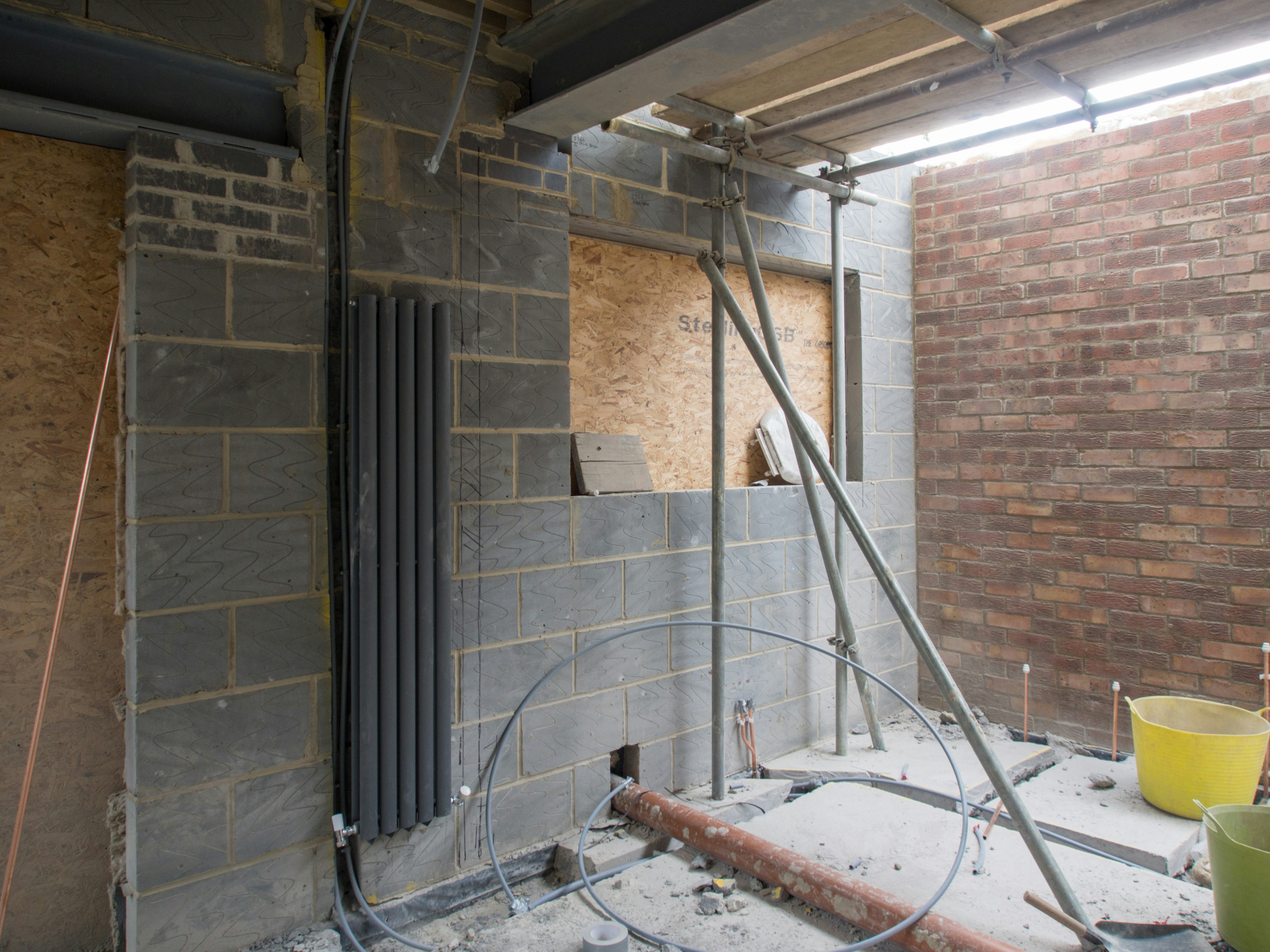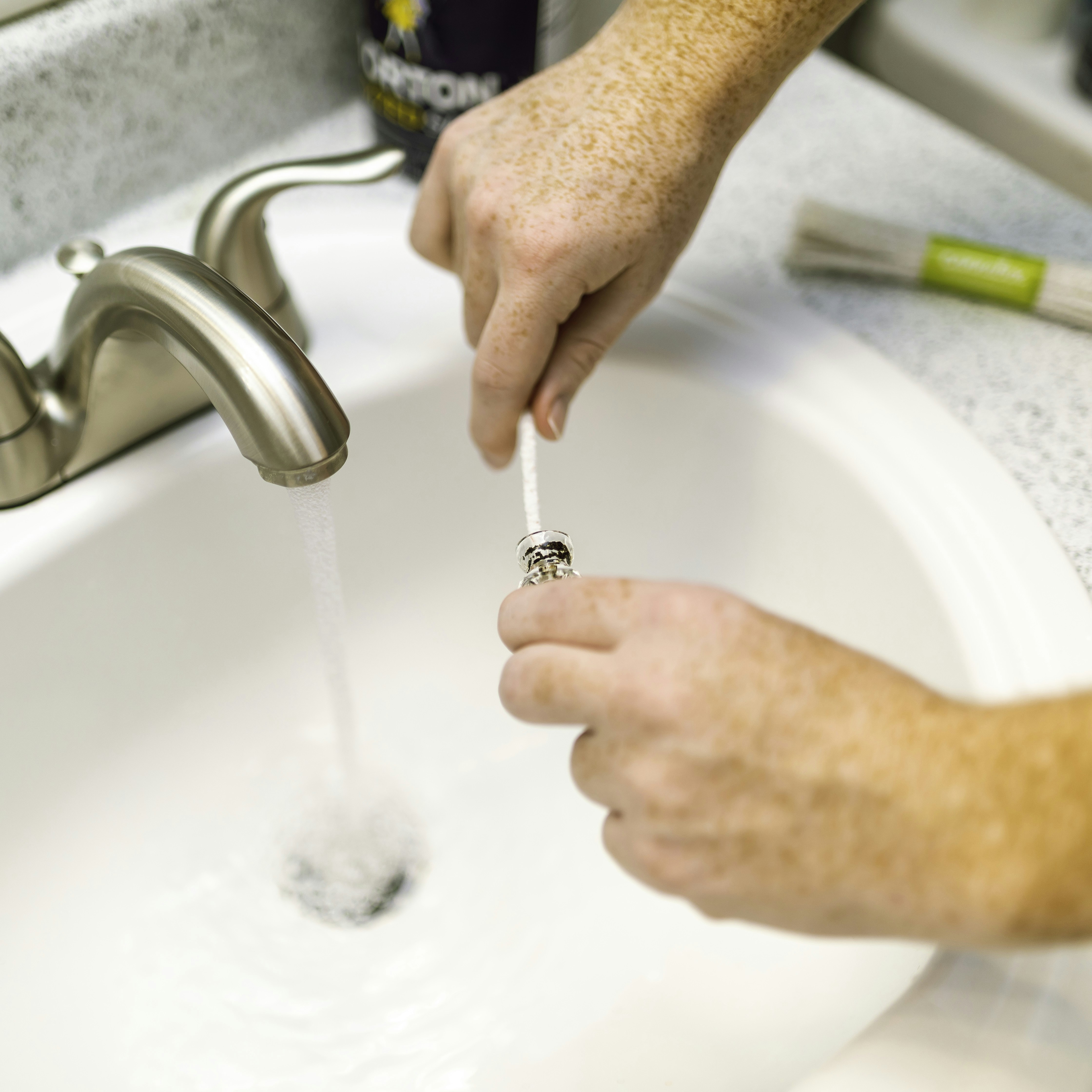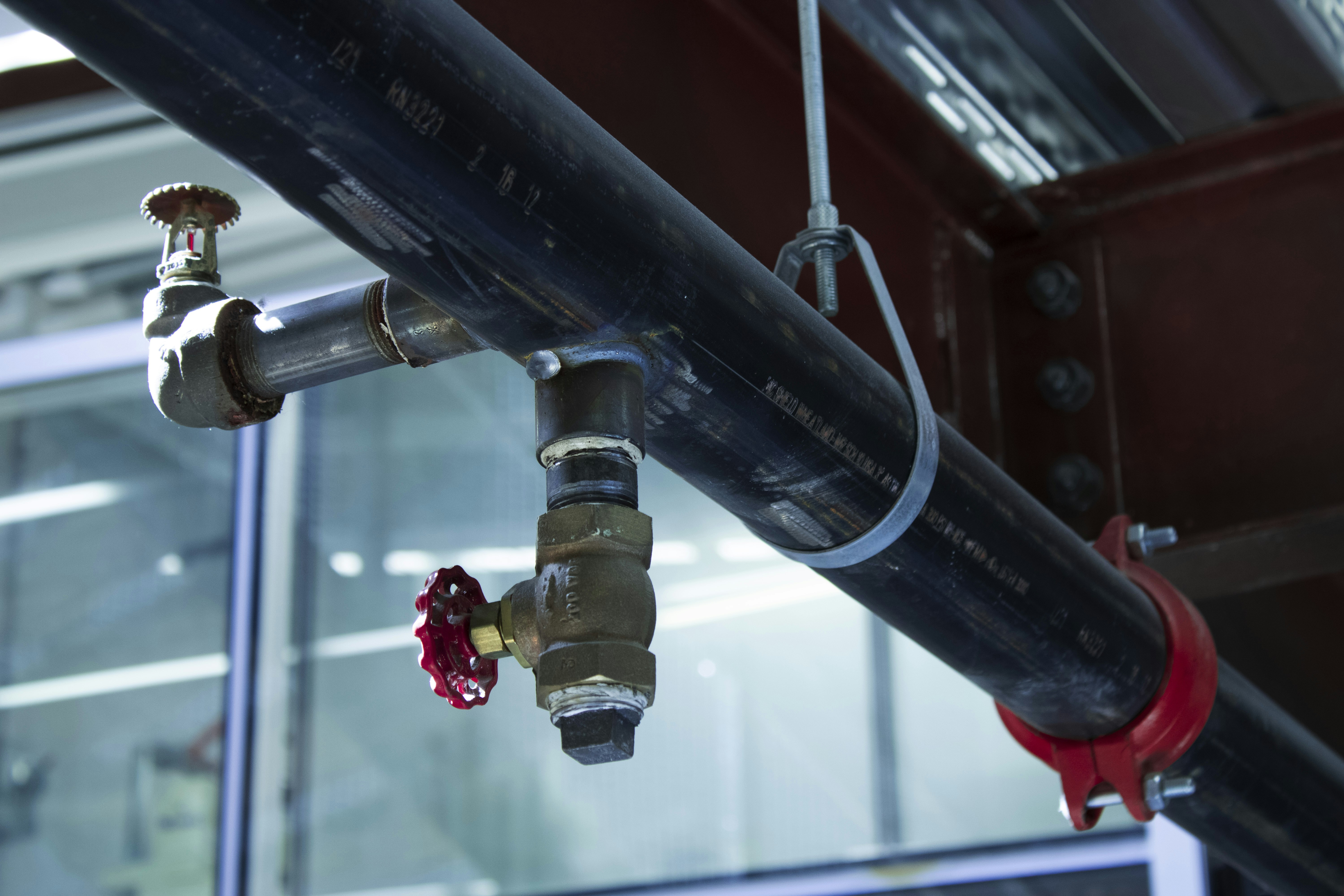In this article, you will discover effective solutions to address well yield and water pressure issues that you may be facing. If you have been struggling with low well yield or insufficient water pressure in your home or business, fear not! We are here to provide you with practical tips and advice on how to tackle these challenges. From identifying the root causes to implementing tried-and-tested remedies, we’ve got you covered. Get ready to say goodbye to frustrating water problems and hello to a steady and satisfying water supply.
Understanding Well Yield and Water Pressure Issues
What is well yield?
Well yield refers to the amount of water that a well is capable of producing over a specific period of time. It is an important factor to consider when assessing the overall functionality and efficiency of a well system. Well yield is typically measured in gallons per minute (GPM) and is influenced by various factors such as the depth of the well, the type of aquifer it is tapping into, and the condition of the well components.
What is water pressure?
Water pressure refers to the force exerted by water as it flows through pipes and plumbing fixtures. It is typically measured in pounds per square inch (PSI) and plays a crucial role in determining the effectiveness of water supply within a building. Insufficient water pressure can lead to issues such as slow-flowing faucets, inadequate irrigation, and reduced performance of appliances that rely on water, such as washing machines and showers.
Common causes of well yield and water pressure issues
There are several common causes that can contribute to well yield and water pressure issues. Some of the key factors include:
- Overuse or excessive demand: Excessive water usage or the presence of multiple high-demand appliances can strain the well system and cause a decrease in well yield and water pressure.
- Leaks or blockages: Any leaks or blockages within the plumbing system or well components can restrict the flow of water, leading to reduced well yield and water pressure.
- Aging infrastructure: Over time, pipes, pumps, and other well components can deteriorate, resulting in reduced efficiency and performance of the well system.
- Insufficient well capacity: If the well is not constructed to accommodate the water demands of the property or if the aquifer is unable to replenish the water supply quickly enough, it can lead to low well yield and water pressure.
- Poor well system design: Inadequate design, such as improper placement or sizing of pipes, can negatively impact well yield and water pressure.
Assessing Well Yield and Water Pressure
Hiring a professional well yield and water pressure specialist
When facing well yield and water pressure issues, it is crucial to hire a professional well yield and water pressure specialist. These experts have the knowledge, experience, and specialized equipment to accurately assess the well system and identify any underlying issues. They can provide valuable insights and recommendations for improving well yield and water pressure.
Conducting a well yield test
A well yield test is an essential step in assessing the performance of a well system. This test involves measuring the flow rate of water from the well over a specific period of time. By conducting a well yield test, professionals can determine the maximum amount of water that the well can sustainably produce. This information can help identify any well capacity issues and guide decisions regarding water usage and system improvements.
Measuring water pressure
Measuring water pressure is another critical aspect when assessing well yield and water pressure issues. A pressure gauge can be installed at a strategic point in the plumbing system to monitor and determine the water pressure levels. By measuring the water pressure, professionals can identify any inconsistencies or deficiencies in the system and make appropriate adjustments or repairs.
Improving Well Yield
Conserving water usage
One of the most effective ways to improve well yield is by practicing water conservation. Conserving water not only ensures that the well system is functioning optimally but also helps to reduce stress on the aquifer and preserve this valuable natural resource. Simple water-saving practices, such as fixing leaks promptly, using efficient appliances, and practicing mindful water usage, can significantly contribute to improving well yield and overall system performance.
Checking for leaks
Regularly checking for and promptly fixing any leaks within the well system is crucial to maintain optimal well yield and water pressure. Even small leaks can cause significant water loss and affect the overall efficiency of the system. Inspecting the entire system, including pipes, fittings, and connections, can help identify any leaks and prevent further damage or decrease in performance.
Installing a larger well pump
If the current well pump is not adequately sized to meet the water demands of the property, installing a larger well pump may be necessary. A professional well yield specialist can assess the water requirements and recommend the appropriate pump size. Upgrading to a larger well pump can help improve well yield and ensure sufficient water pressure to meet the needs of the property.
Enhancing well efficiency
Enhancing well efficiency involves implementing various measures to optimize the performance of the well system. Some strategies include:
- Regular maintenance of well components such as pumps, filters, and pressure tanks.
- Ensuring proper well construction, including proper casing and sealing to prevent contamination and maintain well integrity.
- Monitoring and managing the water drawdown, which is the level to which the water level in the well drops during usage.
By enhancing well efficiency, property owners can maximize the well yield and improve overall water pressure.
Addressing Water Pressure Issues
Checking for clogs or blockages
Clogs or blockages within the plumbing system can hinder the flow of water and cause water pressure issues. Regularly checking for and clearing any clogs or blockages is crucial to maintain optimal water pressure. This can be done by inspecting the pipes and plumbing fixtures for any signs of buildup or debris and using appropriate methods to clear them.
Inspecting pressure tanks
Pressure tanks play a vital role in maintaining consistent water pressure throughout the plumbing system. Regularly inspecting and maintaining these tanks can help identify any issues that may affect water pressure. Ensuring proper tank pressure, checking for leaks or damage, and addressing any defects promptly can help improve water pressure.
Adjusting the pressure switch
The pressure switch is responsible for controlling the operation of the well pump and maintaining water pressure within the desired range. If the pressure switch is not properly adjusted, it can result in inadequate or excessive water pressure. A professional well yield specialist can accurately assess the pressure switch settings and make the necessary adjustments to optimize water pressure.
Upgrading or replacing pipes
Old or deteriorating pipes can restrict the flow of water and contribute to low water pressure. Upgrading or replacing these pipes with newer, more efficient materials can help improve water pressure. Copper, PVC, or PEX pipes are often recommended for their durability and ability to maintain optimal water flow.
Installing a water pressure booster system
In cases where water pressure issues persist despite other efforts, installing a water pressure booster system may be necessary. This system works by increasing the pressure of the water as it flows through the plumbing system, ensuring consistent and adequate water pressure. A professional well yield and water pressure specialist can recommend and install the appropriate booster system based on the specific needs of the property.
Maintenance and Regular Check-ups
Maintaining the well system
Regular maintenance of the well system is critical to prevent and address yield and water pressure issues. This includes tasks such as:
- Regularly checking and cleaning well screens and filters to prevent clogs and maintain optimal flow.
- Periodically inspecting and maintaining the well pump, pressure tank, and other components as recommended by the manufacturer.
- Conducting routine water quality testing to ensure the well water is safe and free from contaminants.
By properly maintaining the well system, property owners can prolong the lifespan of the equipment, optimize well yield, and prevent potential issues from arising.
Scheduling regular check-ups
To ensure the ongoing functionality and performance of the well system, it is advisable to schedule regular check-ups with a professional well yield and water pressure specialist. These check-ups can help identify any emerging problems, address minor issues before they escalate, and provide guidance on preventive measures. Regular check-ups also offer an opportunity to assess the effectiveness of any improvements that have been made to the system.
Professional well system troubleshooting
In the event of persistent or complex issues with well yield or water pressure, it may be necessary to seek professional well system troubleshooting services. These specialists can accurately diagnose the source of the problem through advanced testing and analysis techniques. They can then provide targeted solutions and recommendations to address the specific issues and restore optimal well yield and water pressure.
Preventing Well Yield and Water Pressure Issues
Well system design considerations
Proper well system design is essential to prevent well yield and water pressure issues in the future. Some key considerations include:
- Evaluating water demand and sizing the well, pump, and plumbing system accordingly.
- Ensuring proper well placement to avoid contamination and access a reliable aquifer.
- Incorporating adequate storage capacity to handle peak demand periods.
- Implementing effective water treatment and filtration systems to maintain water quality.
By focusing on proper design from the outset, property owners can reduce the likelihood of future well yield and water pressure issues.
Proper well construction
Well construction plays a significant role in maintaining optimal well yield and water pressure. Some important aspects to consider include:
- Proper casing and sealing to prevent surface water contamination and protect the well from external debris.
- Ensuring appropriate well depth and diameter to access a reliable water source and accommodate future water demand.
- Regular inspections and maintenance to address any issues, such as cracks or damage to the well casing.
By adhering to proper construction practices, property owners can minimize the risk of well yield and water pressure issues caused by structural or contamination issues.
Regular well maintenance
Regular maintenance of the well system is crucial to prevent potential well yield and water pressure issues. This includes:
- Monitoring and maintaining appropriate water levels within the well.
- Cleaning and inspecting the well components, including pumps, filters, and pressure tanks.
- Conducting routine water quality testing to identify any emerging contamination issues.
By incorporating regular well maintenance into a property owner’s routine, they can mitigate the risk of major well system failures and ensure optimal well yield and water pressure.
Water conservation practices
Practicing water conservation is not only beneficial for the environment but also helps in preventing well yield and water pressure issues. Some simple water conservation practices include:
- Using water-saving fixtures and appliances.
- Limiting outdoor water usage during dry periods.
- Fixing leaks promptly and practicing efficient water usage habits.
By incorporating water conservation practices into daily routines, property owners can reduce stress on the well system, prolong its lifespan, and maintain optimal well yield and water pressure.
Emergency Actions
Contacting emergency well repair services
In the event of a sudden well yield or water pressure issue that requires immediate attention, contacting emergency well repair services is crucial. These specialized services have the expertise and equipment to handle emergency situations, diagnose the problem, and provide prompt solutions to restore water supply and pressure as quickly as possible.
Temporary solutions for water supply
During emergency situations when well yield or water pressure are affected, it may be necessary to find temporary solutions for water supply. This can include alternative water sources, such as local water delivery services or public water supply networks. Property owners should be prepared with emergency water storage and have a contingency plan in place to ensure a continued water supply during these situations.
Ensuring safety during emergencies
It is essential to prioritize safety during emergencies related to well yield and water pressure issues. Property owners should take necessary precautions and follow relevant safety guidelines while addressing the emergency. This includes shutting off power to the well system, wearing appropriate safety gear, and seeking professional assistance when needed.
Resources and Tools
Recommended well yield and water pressure specialists
When facing well yield and water pressure issues, it is recommended to hire professional well yield and water pressure specialists. These experts have the knowledge and experience to accurately assess and address the specific issues related to the well system. Local directories, online reviews, and recommendations from trusted sources can help find reputable professionals in the area.
Well yield testing kits
Well yield testing kits are available for property owners who want to conduct basic well yield tests themselves. These kits typically include the necessary equipment and instructions to measure the flow rate of water from the well. Although professional assessment is recommended for accurate results, these testing kits can provide initial insights into well yield performance.
Water pressure measurement devices
Water pressure measurement devices, such as pressure gauges, are essential tools for monitoring and measuring water pressure within the plumbing system. These devices can be purchased from hardware stores or online retailers. It is important to choose a reliable and accurate device to ensure accurate water pressure readings.
Conclusion
Taking proactive measures to address well yield and water pressure issues is crucial for maintaining the functionality and efficiency of a well system. Understanding the factors that contribute to these issues and implementing appropriate solutions can help property owners ensure a reliable and consistent water supply. By hiring professionals for assessments, conducting regular maintenance, and incorporating water conservation practices, property owners can prevent potential problems and prolong the lifespan of their well systems. Remember, a healthy well system with optimal well yield and water pressure is essential for a satisfactory water supply throughout your property.



